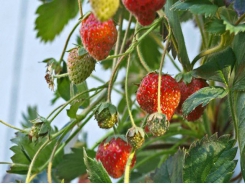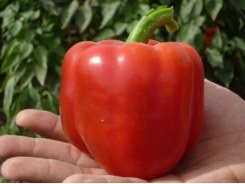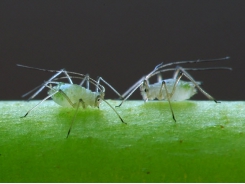Managing early fruit set in peppers

Peppers are relatively easy to grow when conditions are suitable. If not, taking the necessary precautions will avoid some problems.
If peppers start to bear when plants are small, only a few fruits will develop. Photo: Bill Kerr
This starts with the seedlings. Young, vigorous seedlings will continue growing vigorously if transplanted into favourable conditions. Larger, more hardened and older seedlings might react differently. We want to get the maximum yield and quality from the crop while, in contrast, the plant tends to produce seed for the next generation. This principle applies to just about all living creatures.
If the plant can grow well and be productive, it will produce more seed and thus more potential offspring. If the nursery-grown seedling is subjected to harsher conditions during the period of adapting it to its new environment, the plant will ’take precautions’ and immediately go into the reproductive phase to at least produce one fruit. The only way to communicate this to the plant is by providing the correct stimulus. The plant has no idea that it will eventually be transplanted into a more productive environment.
Taking this into account, we may transplant a seedling that has already started flowering or is about to do so. As the plant seldom aborts this bud, we now have a plant that has already started bearing but without the resources in terms of frame size to nurture more fruit other than the one already developing. It will therefore remain smaller than would otherwise be the case and will recover only when the first crop is harvested, reducing total yield. While different varieties may react slightly differently, the principle remains.
We must be aware of the balance between vegetative growth and fruit set. The ideal situation is for the plant to grow a large enough frame before starting to set fruit. As some varieties flower more profusely and set fruit earlier than others, we must be aware of the principle and adapt it to the specific variety and growing condition. The observant and experienced farmer will always get a higher yield than that of his neighbours.
Picking fruit
The correct balance between leaf and fruit can be restored in several ways. The first is to pick the early fruits. These are often between the stems and may become deformed and difficult to pick without damaging the stem. Such downgraded fruit is an easily preventable loss. Another method can be adopted – not for the first awkwardly set fruits, but for those later on. We can send a message to the plant to persuade it to ‘change its mind’.
First, stress it for a while by withholding water. Then provide a generous amount of nitrogen and keep it well watered. The plant may abort many flowers and change over to the vegetative growth phase to restore a more productive and convenient balance.
We must adapt this and other practices to the specific variety. It may be unnecessary with certain varieties, but will be highly beneficial for others. Overdoing it with some varieties reduces the yield potential, a type of reaction that can cause a significant difference in yield between farmers. Observant farmers will always be on top.
Some varieties set fruit as a flush whereas others tend to bear continuously. This is obvious in variety trials where a variety may set as many fruit as the leaf area will permit and then start aborting young fruit, flowers and buds. As the fruit development approaches an advanced stage, it will no longer produce buds. However, the variety alongside may have fruit in various stages of development and still produce new leaves and buds. The latter is more suitable for greenhouse production where plants are pruned and led up strings.
This principle applies mainly to peppers, as their fruit will weigh a couple of hundred grams, whereas chillies will be only a few grams. Early fruit set on chillies will therefore have a far less restricting effect on leaf growth.
Related news
Tools

Phối trộn thức ăn chăn nuôi

Pha dung dịch thủy canh

Định mức cho tôm ăn

Phối trộn phân bón NPK

Xác định tỷ lệ tôm sống

Chuyển đổi đơn vị phân bón

Xác định công suất sục khí

Chuyển đổi đơn vị tôm

Tính diện tích nhà kính

Tính thể tích ao




 Preparing a Vegetable Garden – Expert Tips
Preparing a Vegetable Garden – Expert Tips  Grow Your Own Potatoes – Potato Pests and…
Grow Your Own Potatoes – Potato Pests and…